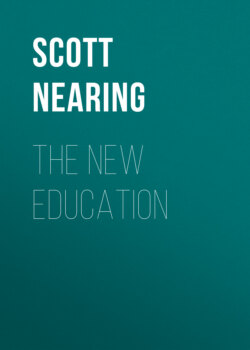Читать книгу The New Education - Scott Nearing - Страница 30
На сайте Литреса книга снята с продажи.
VIII Boys and Girls—The One Object of Educational Activity
ОглавлениеPerhaps our language was not as temperate as it should have been, but we told that father something which we would fain repeat until every educator and every parent in the United States has heard it and written it on the tables of his heart—
THE ONE OBJECT OF EDUCATION IS TO ASSIST AND PREPARE CHILDREN TO LIVE.
Why have we established a billion-dollar school system in the United States? Is it to pay teachers’ salaries, to build new school houses, and to print text-books by the million? Hardly. These things are incidents of school business, but they are no more reason for the school’s existence than fertilizer and seed are reasons for making a garden. Gardens are cultivated in order to secure plants and flowers; the school organization of which Americans so often boast exists to educate children.
“Of course,” you exclaim, “we knew that before.” Did you? Then why was my friend forced to choose between the wreck of his daughter’s health and the disarrangement of a bit of school machinery? Why is Dr. Chancellor able to describe a situation existing “generally and characteristically,” in which the welfare of children is bartered away for high promotion averages? The truth is that society still tolerates, and often accepts, the belief that the purpose of education is the formation of a school system. We have yet to learn that, to use Herbert Spencer’s phrase, the object of education is the preparation of children for complete living.
Education exists for the purpose of preparing and assisting children to live. To do that work effectively, it must devote only so much effort to school administration and to school machinery as will perform for boys and girls that very effective service.
No two children are alike, and no two children have exactly similar needs. There are, however, certain kinds of needs which all children have in common. It is obviously impossible to discuss in the abstract the needs of any individual child. It is just as obviously possible to analyze child needs, and to classify them in workable groups. It is true that all children are different; so are all roses different, yet all have petals and thorns in common. Similarly, there are certain needs which are common to all children who play, who grow, who live among their fellows, and who expect to do something in life. The matter may be stated more concretely thus—
